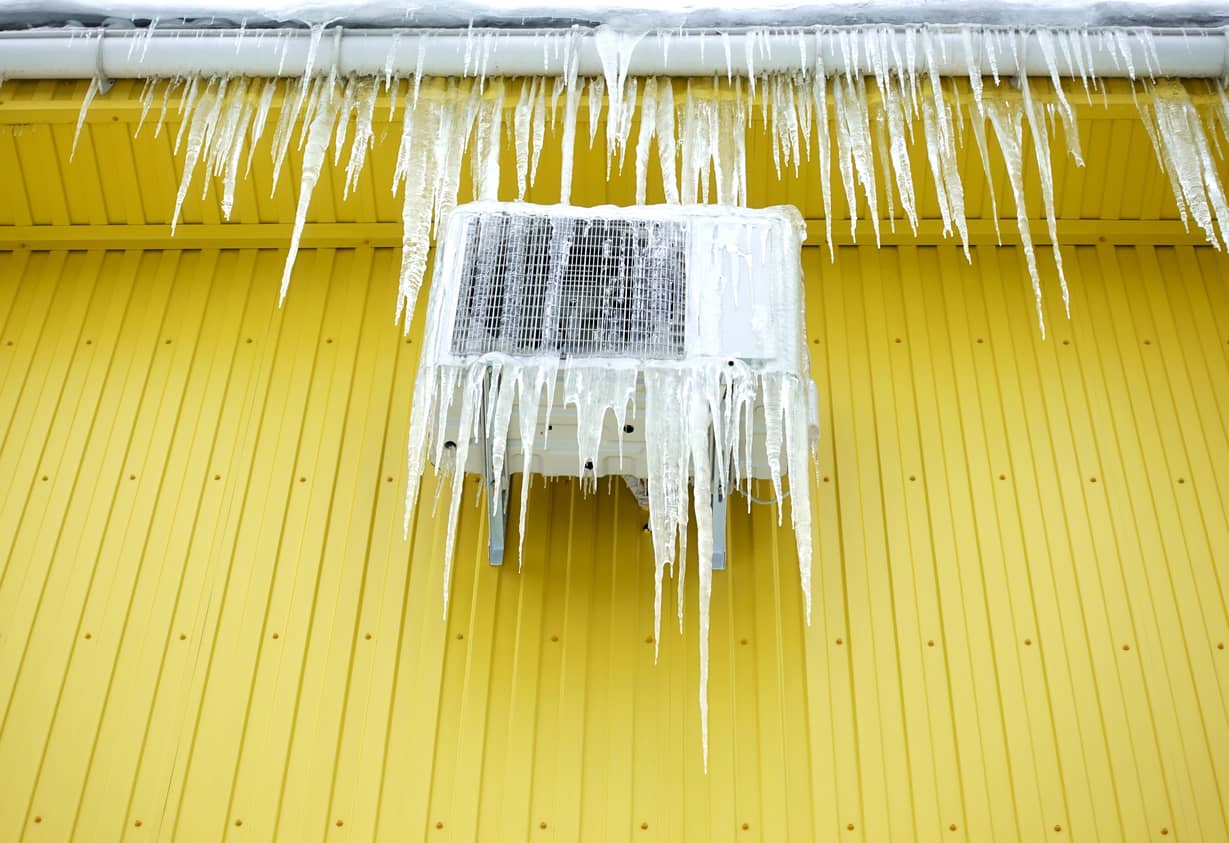Steps to Thaw Out the Frozen AC Pipe: Expert Guidance
Steps to Thaw Out the Frozen AC Pipe: Expert Guidance
Blog Article
How do you feel with regards to Why Is Ice On My Outside Air Conditione?

Introduction
Uncovering that your air conditioning pipe is iced up can be concerning, specifically during warm summertime when you count on your a/c unit one of the most. Comprehending what to do in such a scenario is important to stop further damage to your air conditioning system and guarantee your convenience indoors.
Comprehending the Causes
A number of variables can add to the freezing of an air conditioning pipe. Comprehending these causes can assist you deal with the problem properly.
Absence of Airflow
One typical cause of an icy a/c pipeline is inadequate air movement. When the air flow over the evaporator coil is limited, it can trigger the coil to go down below freezing temperature level, causing ice development on the pipeline.
Low Refrigerant Levels
Inadequate refrigerant degrees in your a/c system can also result in an icy pipe. Reduced cooling agent degrees can create the pressure in the system to go down, resulting in the cold of moisture on the evaporator coil.
Winter Conditions
In colder environments, freezing temperature levels outside can contribute to the freezing of air conditioner pipes. If your air conditioning device is not properly protected or if there are leakages in the ductwork, cool air can penetrate the system, creating the pipeline to freeze.
Dirty Air Filters
Dirty or blocked air filters can restrict air flow in your a/c system, bring about numerous concerns, consisting of a frozen pipeline. It's essential to change or clean your air filterings system frequently to guarantee proper airflow and protect against ice build-up.
Indications of a Frozen Air Conditioning Pipe
Recognizing the signs of an icy a/c pipe is important for prompt activity.
Decreased Airflow
If you see a considerable decrease in air flow from your vents, it could suggest an icy pipe.
Ice Buildup on the Pipe
Noticeable ice build-up on the refrigerant line or the evaporator coil is a clear indicator of an icy air conditioning pipeline.
Unusual Sounds from the Unit
Uncommon audios, such as hissing or gurgling, coming from your air conditioning system can signify that there's ice existing on the pipeline.
Immediate Actions to Take
When confronted with an icy air conditioning pipeline, it's vital to act promptly to stop more damages to your air conditioning system.
Switching off the air conditioner
The first step is to switch off your air conditioning system to stop the system from running and worsening the issue.
Looking for Blockages
Check the area around the interior system for any blockages that may be obstructing air flow, such as furnishings or curtains.
Defrosting the Pipe
You can utilize mild techniques like positioning towels soaked in cozy water around the icy pipe to assist thaw it slowly.
Safety nets
Taking safety nets can aid avoid future events of a frozen a/c pipeline.
Regular Maintenance Checks
Arrange routine upkeep consult an expert HVAC professional to ensure that your a/c system is running successfully.
Changing Air Filters
Frequently replace or clean your air filters to stop air movement limitations and preserve optimal efficiency.
Shielding Exposed Pipes
If your a/c pipelines are revealed to cold temperatures, consider shielding them to stop cold during winter months.
Looking For Professional Help
If DIY methods fail to deal with the problem or if you're unsure regarding how to proceed, it's finest to look for assistance from a qualified HVAC professional.
When DIY Methods Fail
If your attempts to thaw the pipeline or address various other issues are unsuccessful, it's time to employ a professional.
Significance of Hiring a Professional HVAC Technician
A licensed HVAC professional has the knowledge and devices essential to identify and repair concerns with your AC system safely and efficiently.
Conclusion
Handling a frozen a/c pipeline can be an irritating experience, however recognizing exactly how to react can assist lessen damage and bring back convenience to your home. By understanding the reasons, acknowledging the signs, and taking prompt activity, you can efficiently deal with the issue and protect against future incidents.
What to Do If Your AC Line Is Frozen
Make Sure All Supply and Return Air Vents Are Open
If you notice problems with airflow, the first thing you should do is check your supply and return vents. Supply vents distribute clean, conditioned air throughout your home. As this air becomes stale, it’s pulled into the return vent, where it’s reconditioned before being sent back out through the supply vent.
When these vents are closed, air won’t flow in the home. Before examining your AC, check the vents in every room and ensure they’re all open.
Check for a Dirty Air Filter
Another possible cause of limited airflow is a dirty air filter. Your air conditioner’s filters catch elements you don’t want to breathe in, such as dirt and dust. Over time, filters can become clogged, ultimately blocking air from flowing in and out. The lack of airflow can then cause the entire coil to freeze and will completely restrict any air from moving through it. The AC may need to be powered off for one to two days to allow the coil to thaw after replacing the filter to allow proper functioning of the unit. This debris can also accumulate on your AC’s evaporator coil, requiring a more serious repair. In general, air filters should be cleaned regularly (about every two weeks).
Assess Your Outdoor Unit
In addition to checking your AC, assessing the outdoor unit is a good idea. Also known as the condensing unit, it works with your interior unit to release heat outside. An issue with the outdoor unit can result in rising internal temperatures.
Overgrown Shrubs or Clogged Leaves
From leaves and twigs to shrubs and debris, there’s no shortage of outdoor elements that can accumulate around your condensing unit. When these elements get lodged inside the unit, they can block airflow. Fortunately, removing the blockage can solve the problem.
Sounds of a Broken Fan
Shrubs and leaves aren’t the only things that can impede your outdoor unit’s airflow. If the fan is broken, the unit won’t be able to properly get rid of heat — which means the internal temperature won’t go down. First, make sure the fan is spinning. If it is, check for the following sounds of a broken fan:
Buzzing Rattling Screeching Hissing Clicking Preventative Measures
Nobody wants to deal with a frozen AC line. In addition to causing problems with your air conditioner, they require professional repairs. On the bright side, there are preventative measures you can take to help ensure this issue doesn’t arise in the first place.
https://www.coopergreenteam.com/blog/what-to-do-if-ac-line-frozen

Do you appreciate more info about Why Is Ice On My Outside Air Conditione? Give a short review down below. We will be delighted to know your thoughts about this blog entry. In hopes that you visit us again later on. Appreciated our blog? Please share it. Help others find it. Thank you so much for your time invested reading it.
Call Today Report this page